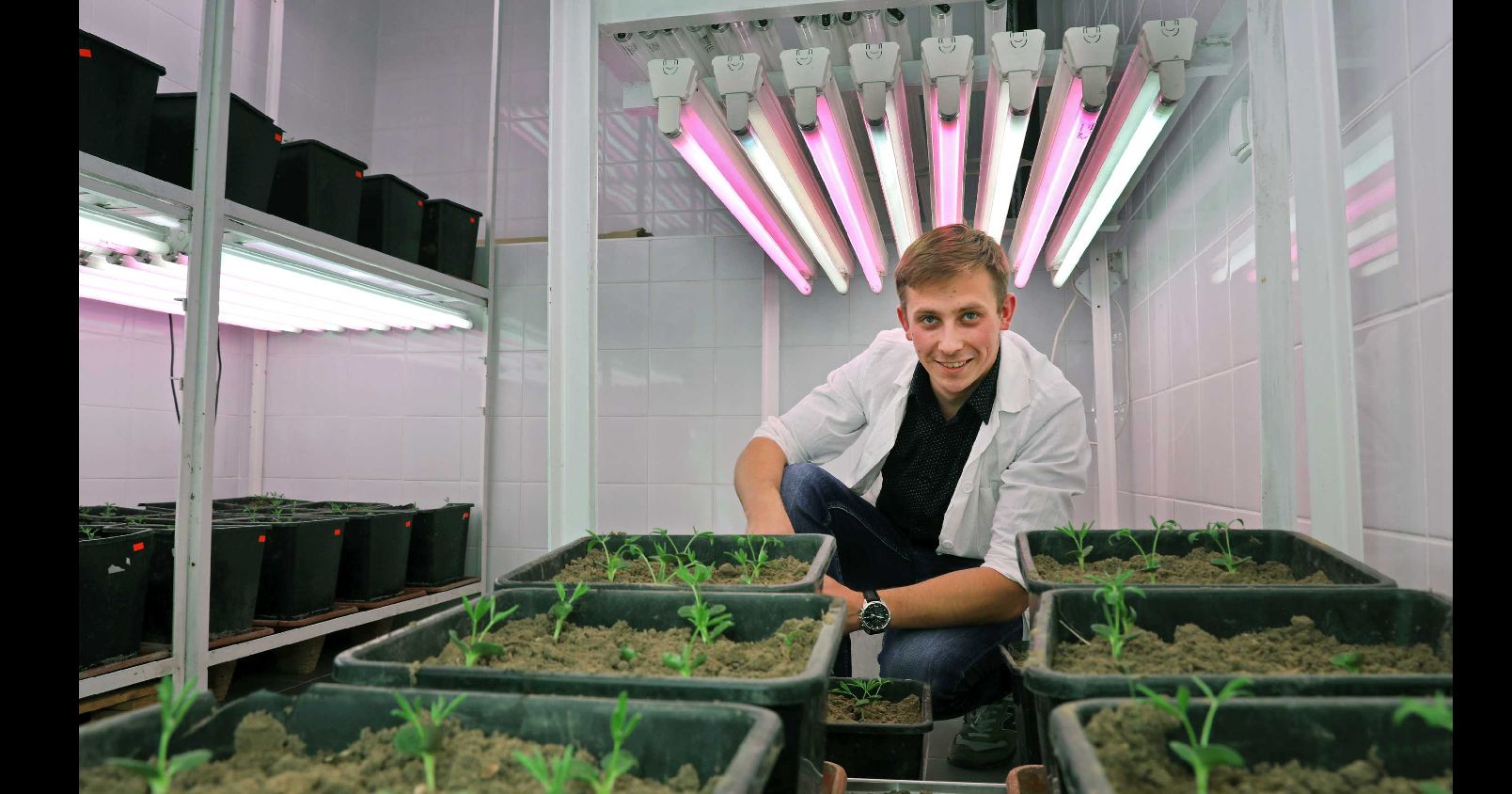 Natural sciences
Natural sciences
Diamond Grant to improve crops of lupin
Lupin, the most resistant to draught and the most profitable crop – is the aim of research, for which Sebastian Burchardt, NCU biotechnology student, gained Diamond Grant.
Diamond Grant Program supports career development of talented students of Master's degree studies or Bachelor's degree studies, who conduct research on a high level and stand out with their scientific legacy. In this edition, 69 laureates out of 173 applicants have been selected by Wojciech Murdzek, the Ministry of Science and Higher Education.
My Diamond Grant is an effect of many-year research conducted at NCU by a research team of professor Wilmowicz, which I am a member of – says Sebastian Burchardt, a student of Biotechnology 2nd cycle in the Faculty of Biological and Veterinary Sciences of Nicolaus Copernicus University in Toruń.
It began with a grant of Ministry of Agriculture and Rural Development which referred to the growth of acreage of crops of plants with a high protein content, which are used in animal feed production. At the beginning, the research related to the area of the chop-off of flowers and bean pods of yellow-flowered European lupin, the seeds of which are a rich protein source. Activating the area of the chop-off in the lupin, which is vulnerable to water deficits, causes excessive separation of flowers, which inhibits pod setting and decreases seed formation. Therefore, the reduced yield is less profitable for farmers.
In the Ministry's grant, the issue of the chop-off area and flower separation was studied and carried out by Emilia Wilmowicz, Dr. habil., NCU Professor of the Chair of Physiology of Plants and Biotechnology of the Faculty of Biology and Veterinary Sciences NCU and by Agata Kućko, Dr. Sc., who is currently working in Warsaw University if Life Sciences. The biologists described physiological, biochemical and molecular transformations liable for the onset and functioning of the chop-off area of flowers. In addition, they also examined the contribution of plant hormones to the regulation of these processes. Last year, for the analysis of these processes, Professor Wilmowicz' student, Agnieszka Florkiewicz, M.Sc., received Diamond Grant entitled "In the search of markers of soil draught stress applicable in the selection of yellow-flowered European lupin of increased yielding potential". This year, Burchardt joined in. He received 219,975 PLN for the research referring to "Impact of soil draught stress on the alterations in metabolism and track of transduction signal of jasmonates in the root of yellow-colored European lupin and on the modification of the root microbiome".
The infiltration of soil bacteria enables the formation of root warts, which are capable of nitrogen fixation from the air. A part of this element is used in a form absorbed by the plant, and a part is accumulated in soil, which increases its fertility and reduces the necessity of the use of artificial fertilizers. Soil draught stress disrupts in yellow-colored European lupin the development and functioning of the root and root warts. This is accompanied by the changing level of so-called stress hormones, including jasmonates, which may affect the amount of the root warts formed, and therefore the amount of the nitrogen fixed. Moreover, these hormones may have a decisive role in the onset of microorganisms which increase the plant's resistance to draught. Therefore, the aim of the project is to learn the track which regulates the formation and functioning of jasmonates in the root during soil draught stress and to estimate the participation of these hormones in biodiversity of microorganisms which impact the reduction of the plant response to draught stress.
How is the research proceeding? At the beginning, it was necessary to collect the investigative material. Lupin grows in arable chambers with excellent light and temperature conditions. In a certain phase of the development, the plants are exposed to controllable draught, and then root warts and the root are cut out. Isolated material is stored in temperature of -80 degrees Celsius and analyzed in further phases of the research.
This is a great opportunity for all academic community – convinces Burchardt. – I took this chance by receiving in June 2020 a research grant for students on carrying out a project referring to lipid transformations in the root. All this research is bound together and composes a coherent issue.
The Diamond Grant laureate links his future with NCU. He wrote his Bachelor's dissertation on the topic of the cutting off the flowers of lupin and the functioning of enzymes protecting the plant against oxidation stress. In his Master's dissertation, he continues his research as the issue is very extensive. The inclusion of NCU into the group of research universities enables its students to engage in scientific development. – This is a great opportunity for all academic community – convinces Burchardt. – I took this chance by receiving in June 2020 a research grant for students on carrying out a project referring to lipid transformations in the root. All this research is bound together and composes a coherent issue.
In IDUB competition, the young student could receive 5,000 PLN for a conference or for a small research project. He decided on the latter. Now, he focuses to carry out his Diamond Grant. The amount he has at his disposal comprises the means to run the research, to purchase the equipment, reagents and necessary commissions to outsourcing companies. It also comprises the remuneration for the young researcher. – Due to this, I already have a job for the next four years – says Sebastian Burchardt. – 219,000 PLN is a huge amount of money, but it must be remembered that molecular examinations are very expensive, for example the cost of a single kit for reactions, which we are using, amounts already to a few thousand Polish Zloty.
The results of the research, in which the 'diamond student' participates may have a significant effect on agriculture. During the still ongoing grant referring to proteinaceous materials, it was the lupin that was selected as the best one because it stands out with its low soil requirements and favorable amino acid composition at the same time. The NCU scientists aim at making the cultivation of lupin more profitable. They would like to select the variety resistant to draught. – Due to improved use of seeds of lupin as an animal fodder material, we might become independent from imported goods, reduce the use of genetically modified soya – concludes the young biologist.
 NCU News
NCU News






